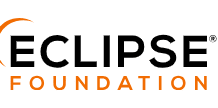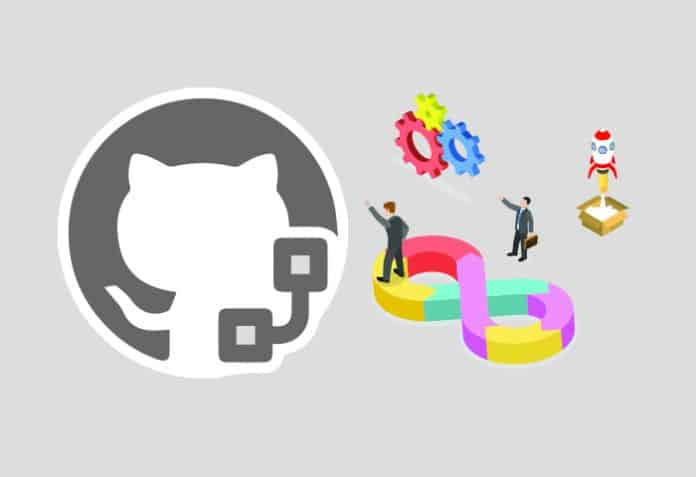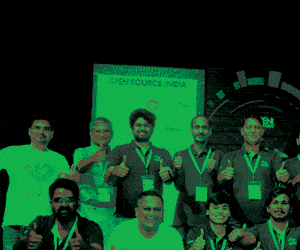The integration of DevOps practices has become crucial for achieving rapid, reliable, and high-quality software delivery. GitHub Actions, an automation tool provided by GitHub, significantly contributes to this process by streamlining and automating various stages of the software development lifecycle. Let’s find out how it can accelerate DevOps adoption.
GitHub Actions comprises event-driven workflows that can be defined, managed, and executed directly within a GitHub repository. These workflows are written in YAML (Yet Another Markup Language) and can be triggered by events within the repository, such as code commits, pull requests, or issue updates. The primary purpose of GitHub Actions is to automate repetitive tasks, improve efficiency, and ensure consistency in the development process.
Key features and benefits
Automation of repetitive tasks: GitHub Actions automate routine tasks such as code compilation, testing, deployment, and notifications. This reduces manual effort and the likelihood of human error, freeing developers to focus on more complex and creative aspects of their work.
Seamless integration with GitHub: Since GitHub Actions are native to the GitHub ecosystem, they integrate seamlessly with repositories. This integration allows for immediate triggering of workflows based on repository events, ensuring that the development process is tightly coupled with version control activities.
Flexibility and customisation: GitHub Actions are highly flexible and can be tailored to meet specific project requirements. Developers can create complex workflows involving multiple jobs and dependencies, enabling sophisticated automation scenarios.
Extensive community and marketplace: The GitHub Actions community is robust, offering a vast library of pre-built actions and workflows available in the GitHub Marketplace. These can be easily integrated into your projects, saving time and effort in creating custom actions from scratch.
Improved collaboration and visibility: By defining workflows as code within the repository, GitHub Actions promote transparency and collaboration. Team members can view, understand, and contribute to the automation processes, fostering a culture of shared responsibility and continuous improvement.
Scalability and cost efficiency: Automating processes with GitHub Actions can lead to significant cost savings by reducing manual intervention and enabling more efficient resource utilisation. This scalability ensures that as projects grow, the automation processes can scale accordingly without additional overhead.
Accelerating DevOps adoption with GitHub Actions
Continuous integration (CI): This involves the frequent integration of code changes into a shared repository, followed by automated builds and tests. GitHub Actions facilitate CI by allowing developers to set up pipelines that automatically build and test code whenever changes are pushed to the repository.
- Automated builds: Define workflows that compile and build the application automatically on each code commit. This ensures that the codebase is always in a buildable state.
- Automated testing: Automated tests are set up to run as part of the CI pipeline. This helps in identifying and addressing issues early in the development cycle, reducing the chances of defects making it to production.
Continuous deployment (CD): Continuous deployment (CD) extends CI by automating the deployment of applications to production or staging environments. GitHub Actions enable teams to create CD pipelines that deploy applications automatically based on predefined criteria.
- Automated deployments: Create workflows that deploy the application to various environments (e.g., development, staging, production) whenever changes are merged into specific branches.
- Approval gates: Implement approval steps in the deployment pipeline to ensure that critical deployments require manual approval, adding an extra layer of control and security.
Code quality and testing: Maintaining high code quality is essential for delivering reliable software. GitHub Actions can be configured to run various code quality checks and testing frameworks to ensure adherence to coding standards and best practices.
- Static code analysis: Integrate tools like ESLint, Pylint, or SonarQube to perform static code analysis, identifying potential issues such as code smells, security vulnerabilities, and maintainability concerns.
- Unit and integration testing: Define workflows to run unit tests and integration tests, ensuring that individual components and their interactions function as expected.
Collaboration and visibility: By using GitHub Actions, teams can improve collaboration and visibility into the development process. Workflows defined in the repository are accessible to all team members, promoting transparency and collective ownership.
- Pull request workflows: Set up workflows that run tests and checks on pull requests, providing immediate feedback to contributors about the impact of their changes.
- Notifications and alerts: Configure workflows to send notifications to relevant stakeholders (e.g., via email, Slack) about the status of builds, tests, and deployments, keeping everyone informed.
Cost efficiency and resource optimisation: Automating repetitive and manual tasks with GitHub Actions can lead to significant cost savings and better resource utilisation. Teams can focus more on innovation and less on operational overhead.
- Infrastructure as Code (IaC): Use GitHub Actions to automate the provisioning and management of infrastructure using IaC tools like Terraform or Ansible, ensuring consistent and repeatable infrastructure setups.
- Resource management: Automate the scaling of resources based on demand, optimising costs by spinning up resources only when needed and tearing them down when not in use.
Getting started with GitHub Actions
Creating a workflow: To create a workflow, you need to define a YAML file within the .github/workflows directory of your repository. This file describes the sequence of steps to be executed in response to specific events.
name: CI Pipelineon:push:branches:- mainjobs:build:runs-on: ubuntu-lateststeps:- name: Checkout Codeuses: actions/checkout@v2- name: Set up Node.jsuses: actions/setup-node@v2with:node-version: ‘14’- name: Install Dependenciesrun: npm install- name: Run Testsrun: npm test |
Choosing triggers: Specify the events that should trigger the workflow. Common triggers include push, pull_request, and schedule.
on:push:branches:- mainpull_request:branches:- mainschedule:- cron: ‘0 0 * * *’ # Runs daily at midnight |
Adding actions: Leverage pre-built actions from the GitHub Marketplace or create custom actions to perform specific tasks within your workflow.
steps:- name: Checkout Codeuses: actions/checkout@v2- name: Set up Node.jsuses: actions/setup-node@v2with:node-version: ‘14’ |
Reviewing and iterating: Test your workflows locally using tools like act or simulate events within GitHub to ensure they behave as expected. Continuously review and refine your workflows based on feedback and evolving project requirements.
Monitoring and optimising: Monitor workflow executions through the GitHub Actions interface, review logs, and optimise workflows to improve efficiency and reliability. Identify bottlenecks and areas for improvement to ensure optimal performance.
GitHub Actions empower development teams to adopt DevOps practices effectively by automating workflows, enhancing collaboration, and accelerating the software delivery pipeline. By leveraging GitHub Actions, organisations can achieve faster time-to-market, improved code quality, and overall agility in software development.
Whether you’re a developer aiming to streamline your CI/CD processes or a team lead looking to enhance DevOps practices within your organisation, GitHub Actions provide a robust platform to automate and optimise your workflows seamlessly. Embrace the power of GitHub Actions to accelerate your DevOps journey and drive continuous improvement in your software development lifecycle.












































































